Disclosure: This post may contain affiliate links. Purchasing a product through one of these links generates a commission for us at no additional expense to you.
There’s no way around it.
If you’ve got a website, you need to know how to use FTP.
The good news is that behind the acronym is a simple skill.
There’s no programming or any coding required. In fact, using FTP to work on your website is really easy.
More importantly, FTP is often critical to fix a “white screen” error on your site. In fact, that might be why you’re here right now.
So let’s get on with the tutorial with a quick overview and then we’ll tackle step #1.
What is FTP?
FTP stands for “File Transfer Protocol” and it’s a method of uploading and downloading files from a server.
In other words, it’s for transferring files between a server and a computer.
You’ll mainly do three things with FTP:
- Upload files to your website
- Download files from your website
- Delete files on your website
That’s pretty much all there is to it!
Now let’s cover how exactly you can use FTP.
Install an FTP client
The first thing you need to do is choose an FTP client.
The FTP client will give you an interface to transfer files to and from your site. There are lots of good options, but I always use and recommend FileZilla.
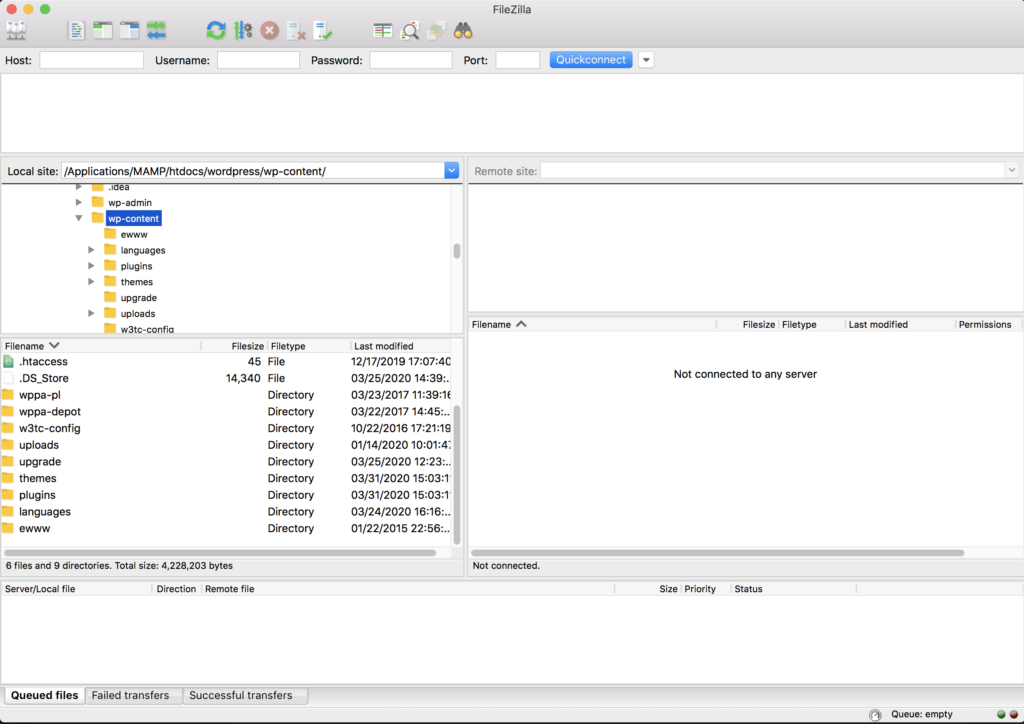
It’s free to use and available for Mac, Windows, and Linux.
FileZilla has a nice interface and you can save multiple site’s credentials, so it’s a practical choice if you have a few websites.
Your web host probably has a free FTP client available within the cPanel as well. That can work fine, but honestly, it’s faster to just open an app like FileZilla installed on your computer than navigating to one inside your hosting dashboard.
Regardless of the solution you choose, the steps will be the same, but I’ll be using FileZilla for all the screenshots throughout this tutorial.
Connect to your site
In order to access your site, you need a new set of login credentials.
Accessing your site via FTP is different than logging into your WordPress website, so you won’t use the same username and password.
Start by clicking this icon in the top-left corner of FileZilla to open the Site Manager:
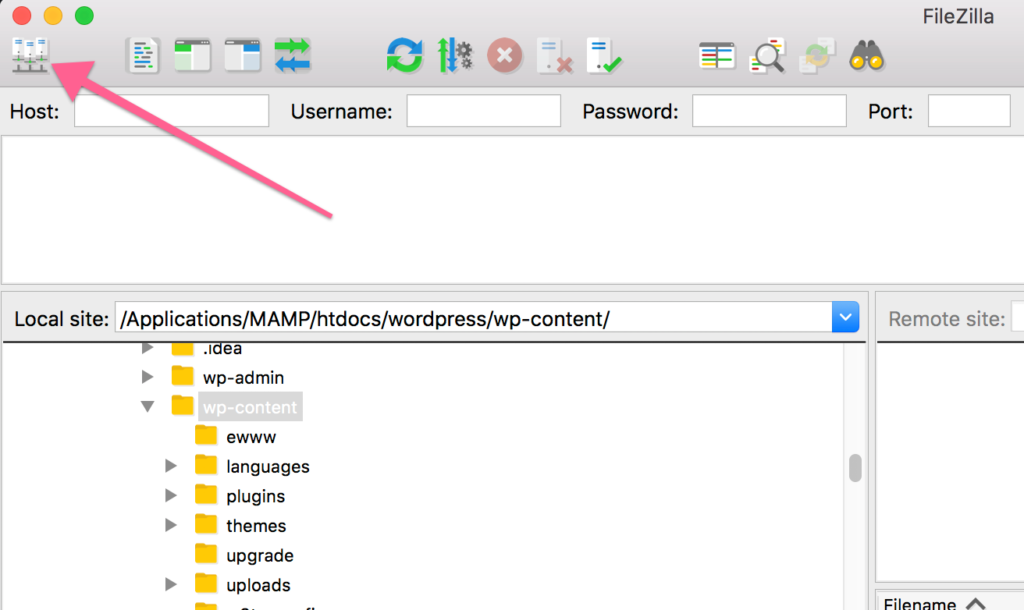
Then click the New Site button in the popup that appears.
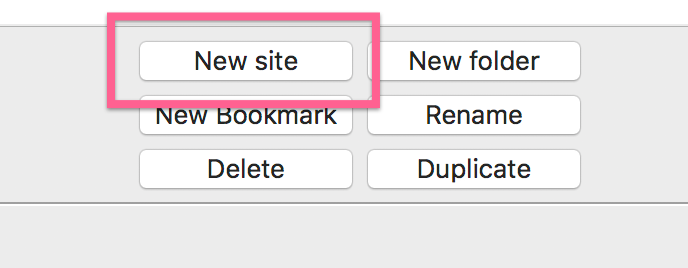
On the right side of the window, you’ll enter in your access credentials so you can connect to your server.
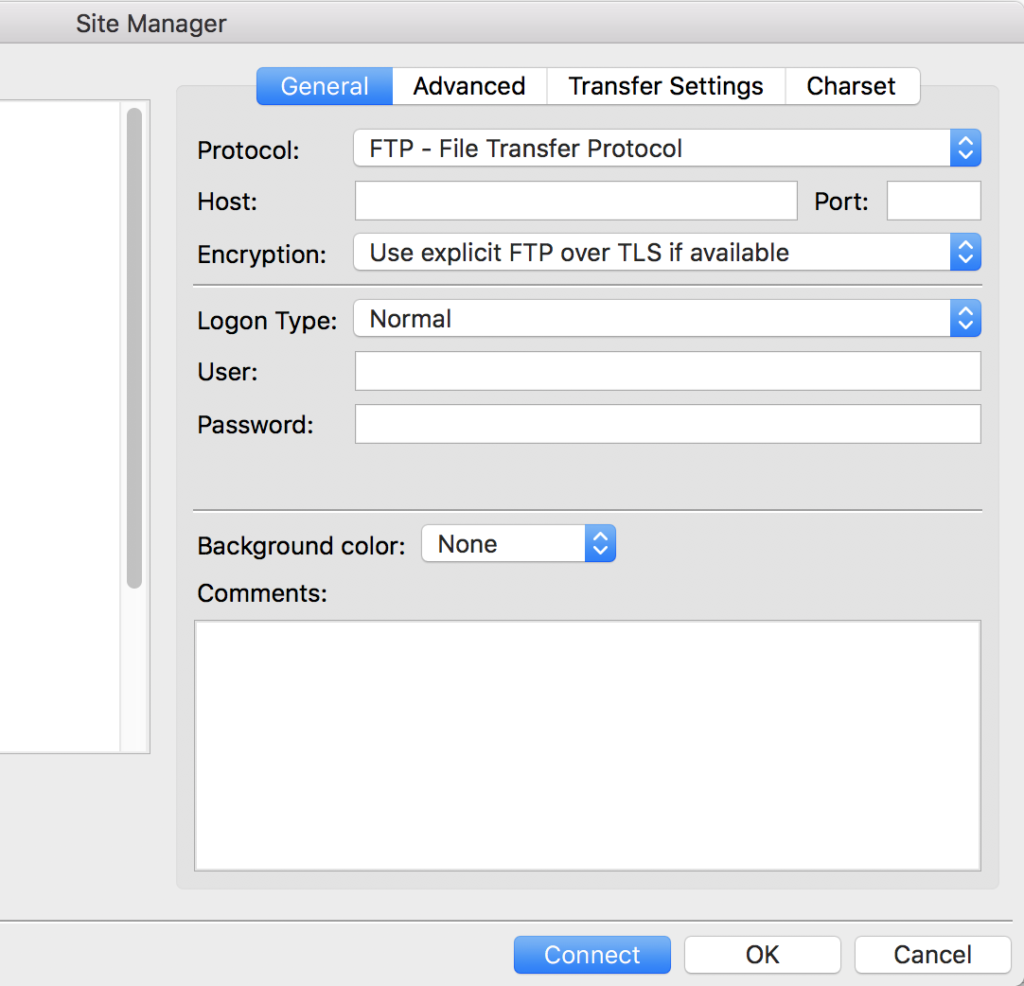
Once you’ve entered them in, you can click the Connect button at the bottom, but first, let’s talk about those login credentials.
Gather your credentials
In total, there are five pieces of information you need to connect to your site via FTP:
- Protocol
- Host
- Port
- User
- Password
Let’s look at them all in turn.
Quick tip
Login to your hosting account and look for an FTP menu. You can probably find all five pieces of information in one place.
If you can’t find something, message your host and they should be able to give you the info right away.
Protocol
This one is easy.
If your site uses “http” then use the first option called “FTP.”
If your site uses “https” then use the second option called “SFTP.”
Host
When you visit a website by name, like google.com, a DNS Server translates that domain name into an IP address to fetch the website. Basically, the real address of a website is its IP address, and the domain name is an alias that we use so we can have branded names for websites. Otherwise, you’d have to memorize a bunch of IP addresses for your favorite sites!

When using FTP to connect directly to your server, DNS servers are not used, so you need to enter your website’s IP address.
The IP address will be used as the “host.”
Port
The port is a number that basically tells the server what actions you’ll be taking. Understanding the specifics isn’t important.
It will probably be 21 or 222, but you should check your hosting account for this number.
Username & password
Your WordPress username and password will not work for this. You will use a separate username and password specifically for using FTP.
You can find this info inside your hosting account.
Once you have all of this info, you’re ready to connect.
Login with your account
Add all of the info you gathered into the FileZilla app, and then you can click the Connect button to access your server.
If everything goes well, you should see a bunch of folders show up on the right side of the screen.
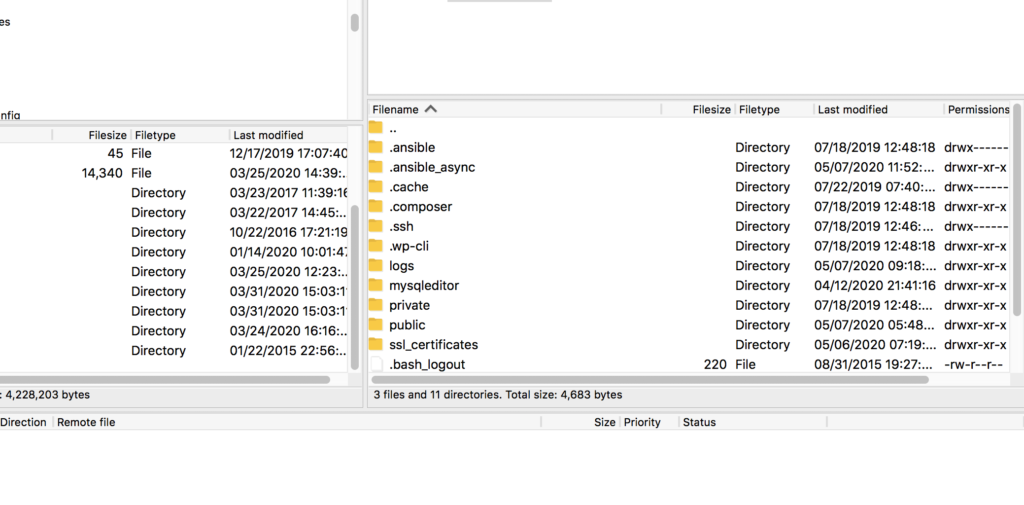
Congratulations! You’ve just connected to your server and unlocked the world of FTP.
Now let’s cover how to upload and download files.
How to transfer files
Take another look at the FileZilla interface when it’s connected to a site.
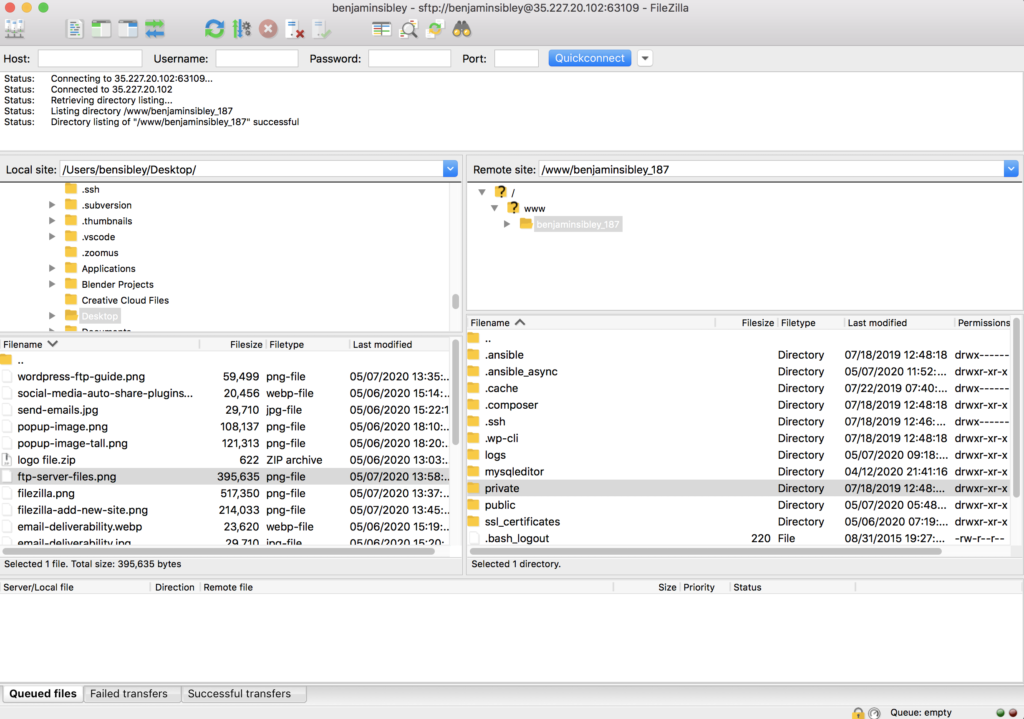
On the left side, are the files on your computer, and on the right side are the files on your website.
To upload a file, navigate to its location on the left and then double-click it to upload. The file will be uploaded to the location open on the right side of the screen.
To download a file from your site, double-click on it and it will download into the open location on the left side of the screen.
Alternatively, you can right-click any file and choose the download/upload option. You can also find the option to delete files and folders by right-clicking on them.
That’s all you need to know to upload and download files with FTP.
There’s just one last thing that tends to confuse first-time FTP users.
Where is WordPress?
You know your server is open on the right side of FileZilla, but where are the WordPress files?
Now, this is different for each web host, but the majority of the time, your website’s files will be inside a folder called “public” or “public_html.”
Look for one of those folders and double-click to open it up. What you find next depends on your hosting configuration. You might find a folder named after your site, or a folder named “wordpress,” or you might already be in the WordPress folder.
Here’s something I can guarantee: this is what you’ll see when you’ve opened the “wordpress” folder:
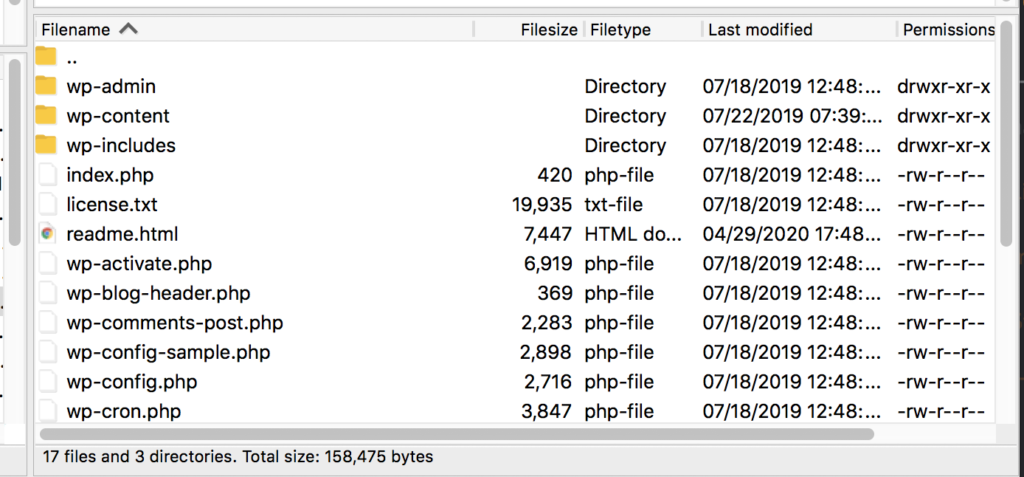
Regardless of which host you’re using, you’ll know you’ve found the WordPress folder when you see these files and folders inside. You’ll always see the wp-admin, wp-content, and wp-includes folders.
Where to find themes & plugins
You’re probably using FTP to upload, delete, or edit a theme or plugin, so here’s where to find those.
All themes and plugins are stored inside the “wp-content” folder.
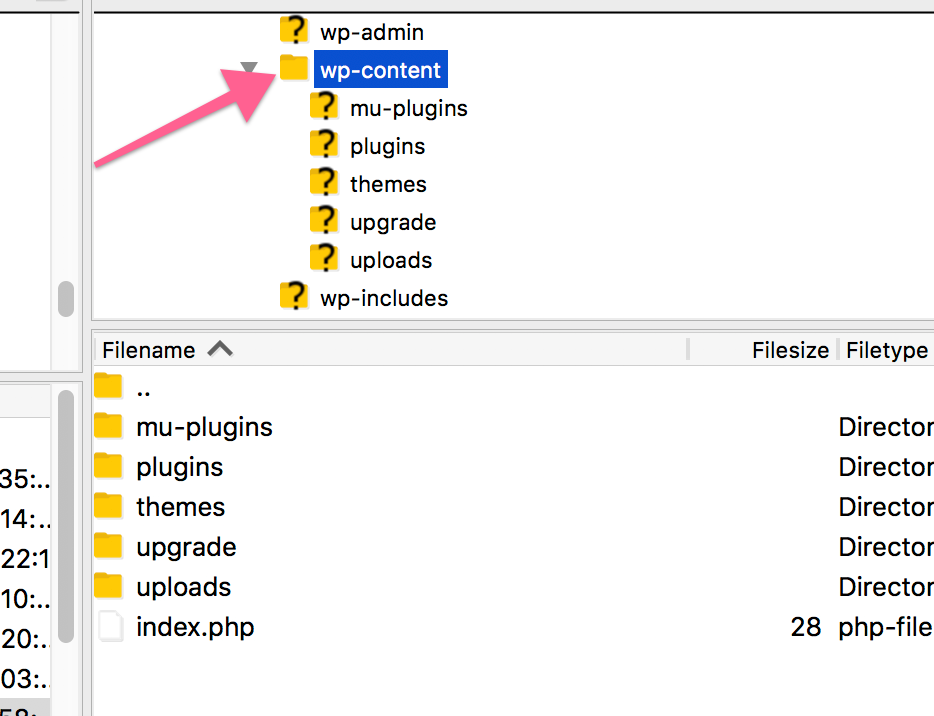
As you’d expect, all of the themes and plugins are stored in their respective folders.
Where to find your images
All of the images you find in the Media Library are stored within the “uploads” folder inside wp-content.
Inside the uploads folder, you’ll find a folder for each year and a folder inside that year for each month. Yes, it’s a pain to navigate but this is how the media folders in WP are setup.
Where to find the config file
It’s common for WordPress users to need to edit the wp-config.php file.
This file is located within the wordpress folder itself.
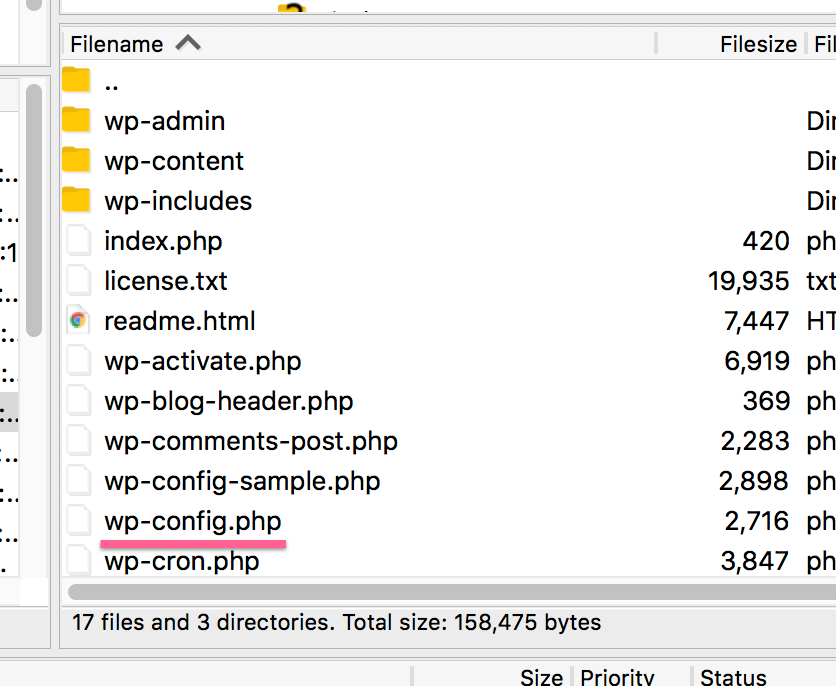
How to edit files
The last thing you might want to do is to edit a file like wp-config.php.
To edit a file, you simply download it, edit it, and then reupload it.
If you’ve never edited a PHP file, you may not have a good text editor installed for this purpose. If you have a PC, you can use Notepad++, and Mac users can use TextWrangler (both are free).
These are really basic code editors, but since your needs are simple they’ll work just fine.
Using FTP with WordPress
FTP sounds intimidating at first, but now you know it’s a simple tool to use.
In fact, it’s not really any more difficult than logging into WordPress.
Using FTP is absolutely essential at times, so you’re likely to put this skill to good use many times in the future.
If you want to keep learning more technical WordPress skills, you’ll probably enjoy this tutorial on how to backup your website’s files and data:
How to Backup Your WordPress Website →
If you’re not already backing up your website, you’ll definitely want to give that a read.
Thanks for reading, and if this tutorial helped you out then please consider sharing it with someone else before you go.



